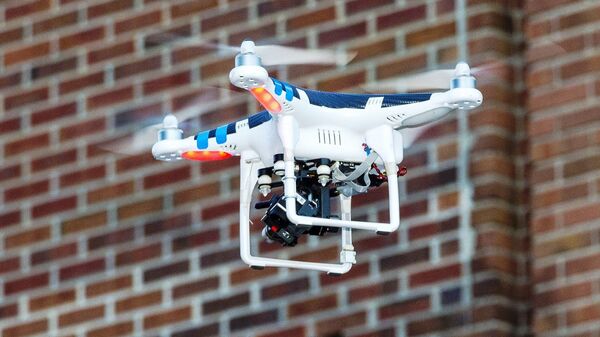The UK is coming closer to introducing swarm drones to its military forces, according to a report by Stars and Stripes.
The report cites UK Defense Minister Gavin Williamson, who said during a recent speech at the Royal United Services Institute on Monday that the UK will fund the development of "swarm squadrons of network-enabled drones capable of confusing and overwhelming enemy air defences," adding that these drones will complement the British fleet of US-built Lockheed Martin F-35 fighter jets.
The idea of drone swarms has become popular and Willamson's speech points out that military assets are now getting interested in incorporating them into the battlefield.
Best view of the @Intel drone swarm performance at the Olympics pic.twitter.com/mCsILkq38Z
— Chris Anderson (@chr1sa) 11 февраля 2018 г.
A drone swarm is not just a bunch of drones, but a bunch of drones that actively communicate with each other and act as a single being. In theory, their apparently erratic movements should be able to confuse anti-air systems, experts say.
"The whole idea of a swarm is not just that it's a lot of them, but a lot of them working together, sharing information across the swarm," says Peter Singer, a senior fellow at the New America Foundation who studies the future of warfare. According to Singer, this idea was initially science fiction, then "heresy" and is now being "increasingly accepted."
Williamson, however, optimistically stated that drone swarms will be deployed "within a year," which tech experts dismissed as unrealistic, Stars and Stripes reports. The UK Ministry of Defense later clarified that the drones are expected to be developed "over a 3-year programme."
A NanoCopter swarm #Drones #Drone #IoT #LiveWorx pic.twitter.com/QJMkJ749bQ
— Evan Kirstel in #SanFrancisco @samsung #unpacked (@evankirstel) 22 мая 2017 г.
Drone swarms are a morally controversial idea, experts point out, since for a swarm to operate, the drones must be more or less autonomous. An operator will identify a target and press a trigger, but the individual drones will make decisions to attack based on their own observable data.
US military officials have specifically stated that any weaponry with artificial intelligence, even those capable of autonomous movement and target selection, will have humans "in the loop" who will make the final decision to fire. With swarm drones, an AI comes between a human and a firing mechanism.
"The swarm idea inherently drives you towards autonomy," Singer says.
There are technical difficulties engineers must overcome, Stripes says. For example, it is still largely unclear, how a human will control an entire swarm within an acceptable margin of error.
This point did not evade Russian military engineers, however, who rolled out a wide array of radio-electronic weapons of various nature, size and power, which aim to either roast the electronic components of drones or disrupt their communication channels — the network required for a functioning swarm. As to good old-fashioned kinetic destruction, Russian Pantsir AA systems with computer-aimed machine-guns might just do the trick, according to reports.
Both approaches have proven their effectiveness during numerous drone attacks on the Russian military base in Syria's Khmeimim. A January 2018 attack involved 13 drones, seven of which were gunned down by Pantsirs, while six others were intercepted by radio-electronic warfare systems.


